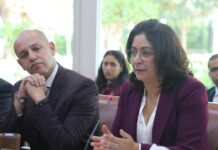As of September 1, 2024, Morocco is witnessing a profound shift in household dynamics, with the number of households reaching 9.27 million, up from 7.31 million in 2014. This growth represents an annual increase of 2.4%, slightly slower than the 2.6% observed between 2004 and 2014. Notably, household growth has far outpaced population growth, which rose by only 0.85% annually during the same period. This disparity has led to a significant reduction in average household size, which has fallen from 4.6 persons in 2014 to 3.9 persons in 2024.
Both urban and rural areas reflect this trend, albeit at different rates. In urban settings, the average household size dropped from 4.2 to 3.7 persons, while in rural areas, the decline was sharper, from 5.3 to 4.4 persons. This shift marks a clear move toward smaller households across the country, a reflection of broader demographic and societal changes.
Accompanying this transformation is the evolving composition of Moroccan households. Between 2014 and 2024, the share of single-person households rose sharply from 7.2% to 11.1%, illustrating a growing tendency for individuals to live alone. Similarly, the proportion of households comprising two to three people increased from 26.1% to 31.7%, suggesting a rise in smaller family units. In contrast, larger households, made up of four or more people, have declined significantly, dropping from 66.7% to 57.2% over the decade.
These changes are further compounded by the increasing number of women-led households, which have grown from 16.2% in 2014 to 19.2% in 2024. This trend highlights shifting social and economic roles for women in Morocco, reflecting greater female participation in both household leadership and broader societal dynamics. The phenomenon is particularly pronounced in urban areas, where 21.6% of households are now headed by women, compared to 14.5% in rural areas.
The rise of smaller households, coupled with more women assuming leadership roles in their homes, underscores the evolving family structure in Morocco. These shifts reflect deeper societal transformations, including changing lifestyles, economic pressures, and greater gender equality, particularly in urban centers. As Morocco navigates these changes, these trends will have far-reaching implications for housing policies, social infrastructure, and economic planning in the coming years.





